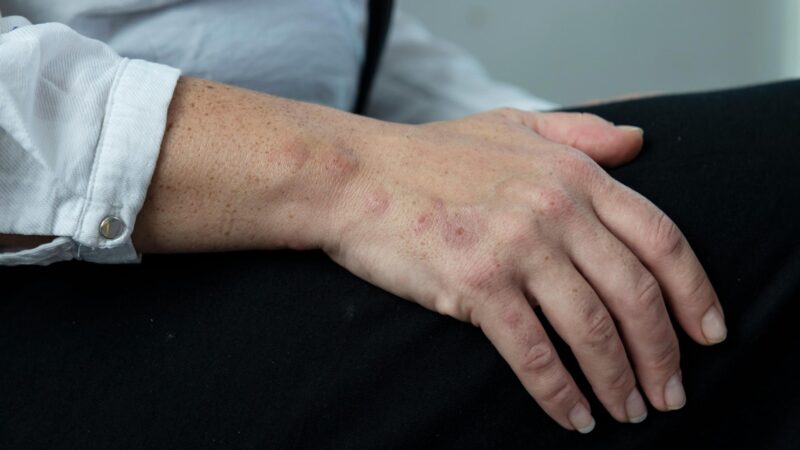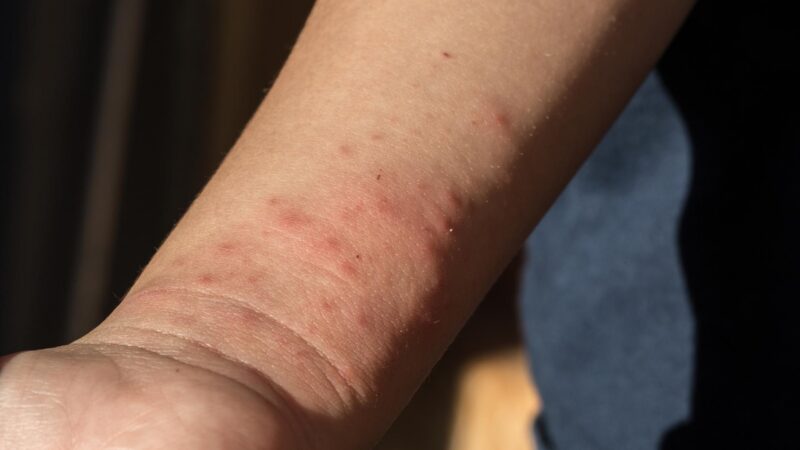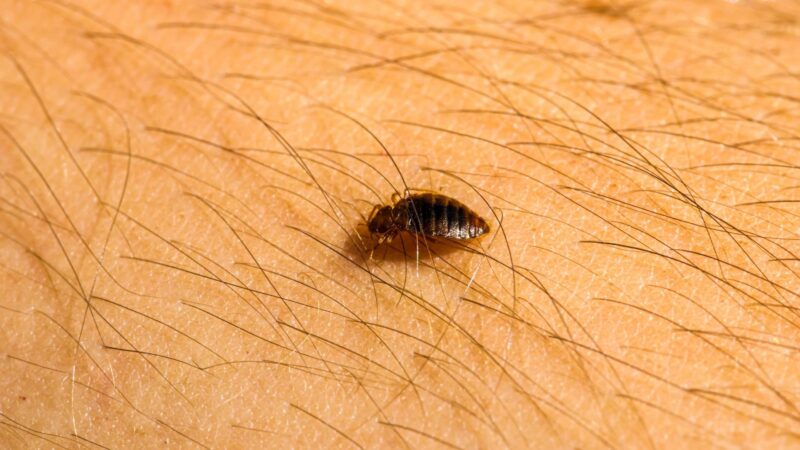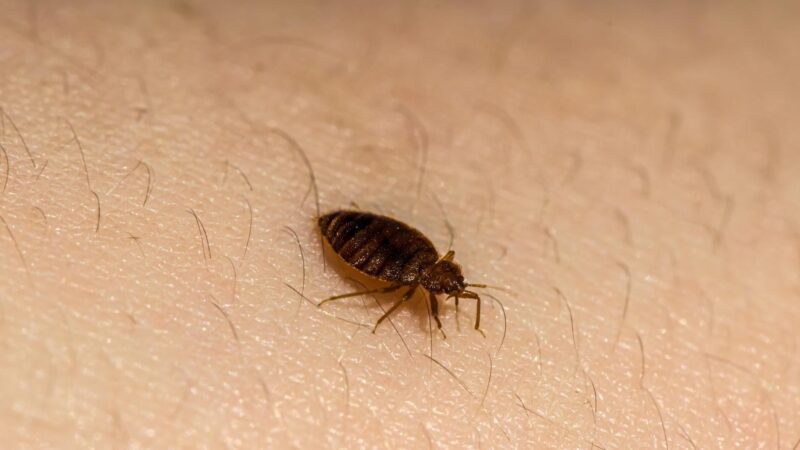If you’re not allergic to something but started to have itchy skin, you’ll be eager to know what the culprit is. It’s normal to think that the minute creatures have invaded your house. You have to look at the affected area for signs and evaluate the symptoms.
What’s the difference between dust mite bites and bed bug bites? Dust mites don’t bite at all as their excrement and secretions are the ones that contain the allergen. You’ll have red, itchy bumps and symptoms like itchiness, sneezing, watery eyes, runny nose, and stuffiness. Bed bug bites are not painful, but you’ll only wake up the next day with small, red welts like mosquito bites. Some may find the signs after a few days.
Some may not feel anything from having bed bugs around. However, the allergic reaction to dust mites can escalate to asthma, respiratory problems, and eczema.
Hence, dust mites and bed bugs have different effects. Nevertheless, they share the same areas in your house, like bedding, mattresses, curtains, and upholstered furniture.
It’s best to learn more about them and their effects apart from comparing them.
Table of Contents
How Do Bed Bug Bites Look Like?

Bed bug bites are small, red welts akin to mosquito bites. The bites swell and are itchy too. Some individuals experience more swelling and itchiness. Surprisingly, some don’t go through any of these symptoms as the effects are different for every person.
How Do Dust Mite Bites Look Like?
As mentioned, dust mites don’t bite as they only produce allergens, which will create red, itchy bumps on your skin.
The symptoms are identical to that of hay fever but milder. Hence, swollen eyelids can occur as eyes become itchy and watery.
How Do Bed Bugs Bite?
Bed bugs bite people who are asleep. They bite the exposed areas, which are the face, neck, arms, legs, and hands.
These bugs insert their mouthpart into the human skin to sip a small amount of blood. As they bite, they leave their saliva, which causes red, itchy welts.
Do Bed Bugs Bite Face?
Bed bugs bite the face since it’s one of the exposed body parts.
Do Bed Bugs Bite Feet?
Bed bugs bite feet because they get blood from any exposed skin.
Are Bed Bug Bites Dangerous?

Fortunately, bed bug bites are partly not dangerous because they don’t bring diseases into the human system when they consume blood. However, they can cause emotional distress if the symptoms persist.
A person affected by bed bug bites can be sleep-deprived and go through obsessive behavioral compulsions.
Bed bugs feed on blood at a fast rate, and this can cause considerable blood loss that ends up in anemia. It shouldn’t happen to malnourished children as it can worsen their health.
How to Tell Bed Bug Bites From Other Bites?

Bed bug bites create red, itchy welts. Though they’re the first signs of infestation, these symptoms could have taken effect because of other reasons.
To confirm that bed bugs are the culprit, you have to look for their presence in your house. Use a flashlight as they like to dwell in dark areas like cracks and crevices.
You’ll also find them in mattresses, beddings, and on the bed’s cracks or folds. When you see the bugs, place them in the bottle for an expert to identify them.
Some tiny marks and bloodstains can also be found in areas where bed bugs reside. These bugs usually secrete blood droplets after feeding. These marks also come up when you roll over them.
What to Do for Bed Bug Bites on Humans?

The itchy bites of bed bugs will disappear on their own in a week or two. Try your best to overcome the urge of scratching to avoid infection.
Wash the affected area with soap and water, then apply calamine lotion or hydrocortisone cream. These substances can alleviate itchiness and swelling. If the itchiness persists, you can take an antihistamine such as Benadryl.
How Do Dust Mites Bite?
Dust mites don’t bite, but people are naturally allergic to them. After a person cleans a house or building, he or she will likely have allergic symptoms from dust mites.
There will be sneezing, runny nose, watery eyes, and nasal stuffiness. But there are allergens in dust aside from dust mites such as pollen, spores, cockroach droppings, and dander of cats and dogs.
Can Dust Mites Bite Cats?
Dust mites don’t bite cats as they only feed on animal dander, bacteria, fungi, human skin scales, and pollen. As for their water needs, they absorb what’s in the air and their environment.
Can Dust Mites Bite Dogs?
Dust mites don’t bite dogs as they only feed on minute things around them. All in all, they don’t bite on animals, but they’re only after the dander.
Can Dust Mites Bite Humans?
Dust mites don’t bite humans but only feed on their skin. A person sheds off skin nonstop, so 1/5 ounce of dead skin comes off every week.
Since humans spend 1/3 of their time sleeping, dust mites are attracted to bedrooms, specifically in mattresses and bedding. These mites are also drawn to areas where pets sleep because of dander.
Can Dust Mite Bites Make You Sick?
According to the National Library of Medicine, dust mite allergy usually develops in childhood or puberty years. Sadly, it won’t go away once it’s in a person’s system.
When one has allergic rhinitis ongoing for many years, dust mite allergy can affect the lower airways or lungs. Thus, the case will fall into asthma.
Moreover, individuals who have dust mite allergies are also allergic to seafood such as shrimps, lobsters, crabs, mussels, and shellfish. It can also lead to sinusitis or inflammation of the sinus.
How Do I Know I Have Dust Mite Bites?
Although the dust mite doesn’t bite you, you’ll see red, itchy bumps, but it will go after half an hour. But this skin issue comes with sneezing, runny nose, and stuffy ears. It may also lead to eczema.
What to Do With Dust Mite Bites?
You can take antihistamines or inhale steroids. If you have confirmed with your physician that you have a dust mite allergy through an allergy blood test, you can have immunotherapy that lets you take tablets or receive shots.
This process is long-term control of allergens as it changes your body’s response to allergens.
How to Get Rid of Bed Bugs and Dust Mites?
1. There are two ways to clean when you want to get rid of bed bugs and dust mites. First, you can use a vacuum to collect these tiny creatures. Make sure to use a HEPA filter or microfiber bags with double layers.
It’s essential to wear a mask when vacuuming to avoid inhaling the dust. After vacuuming, leave the area for at least 20 minutes which is enough time to let allergens and dust settle. Secondly, use a damp mop or rag when removing the dust. Never use a dry one because it can stir up the allergens.
2. These bugs thrive in high humidity, so investing in a good dehumidifier like Pro Breeze Electric Dehumidifier makes sense. You have to set the humidity levels to 50% or lower.
In connection with this, it’s advised to clean the filter of your air conditioner frequently. By doing so, you can lower the humidity indoors to 50%.
3. Wash your clothes in hot water and dry them under a temperature of at least 49 degrees Celsius. Let it stay under the heat for 20 minutes or longer so you can also kill the eggs.
4. Changing bed sheets should be done frequently as they like to stay in these things. You can store your pillows and mattresses in plastic for extra precaution.
Bed Bugs vs. Dust Mites | Home Remedies
You can make a DIY solution for bed bug bites, like making a paste out of one teaspoon of water and three teaspoons of baking soda. Apply the mixture to the affected area. You can also cool down the itchiness by placing a bag of ice on the bites.
Don’t put the ice directly on your skin, as it can cause frostbite. Make sure to wrap the ice with a towel or cloth before placing it on your skin.
Dust mites can leave your skin red with itchy bumps that disappear in 30 minutes. But symptoms like sneezing, runny nose, and stuffy ears follow. You can make a nasal wash to take out mucus from your nose.
In a cup of distilled water, put a pinch of baking soda and half a teaspoon of salt. Mix them and this can replace saline spray that you can buy from a drug store.
Summary
Dust mites and bed bug bites share the same habitat, which is mainly the bedding. Dust mites are only after human’s dead skin, but the bed bugs suck blood from people.
Thus, dust mites don’t bite a person, unlike bed bugs. Some people are not bothered by bed bug bites, but others develop dust mite allergies that can bother them throughout their lifetime.
Exterminating them can be done in the same ways, such as cleaning often and lowering indoor humidity.